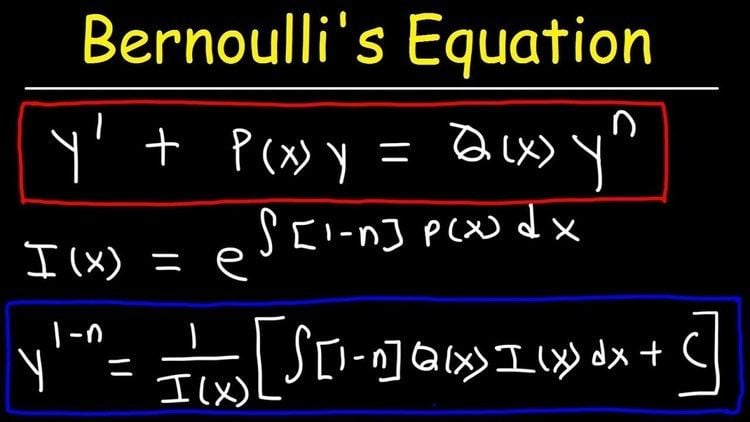Similar Power series solution of differential equations, Binomial differential equation, Homogeneous differential equation | ||

In mathematics, an ordinary differential equation of the form:
Contents
is called a Bernoulli differential equation where
Transformation to a linear differential equation
Note that for
Let's consider the following differential equation:
Rewriting it in the Bernoulli form (with
Now, substituting
Solution
Let
be a solution of the linear differential equation
Then we have that
And for every such differential equation, for all
Example
Consider the Bernoulli equation (more specifically Riccati's equation).
We first notice that
Changing variables gives the equations
which can be solved using the integrating factor
Multiplying by
Note that left side is the derivative of
The solution for
